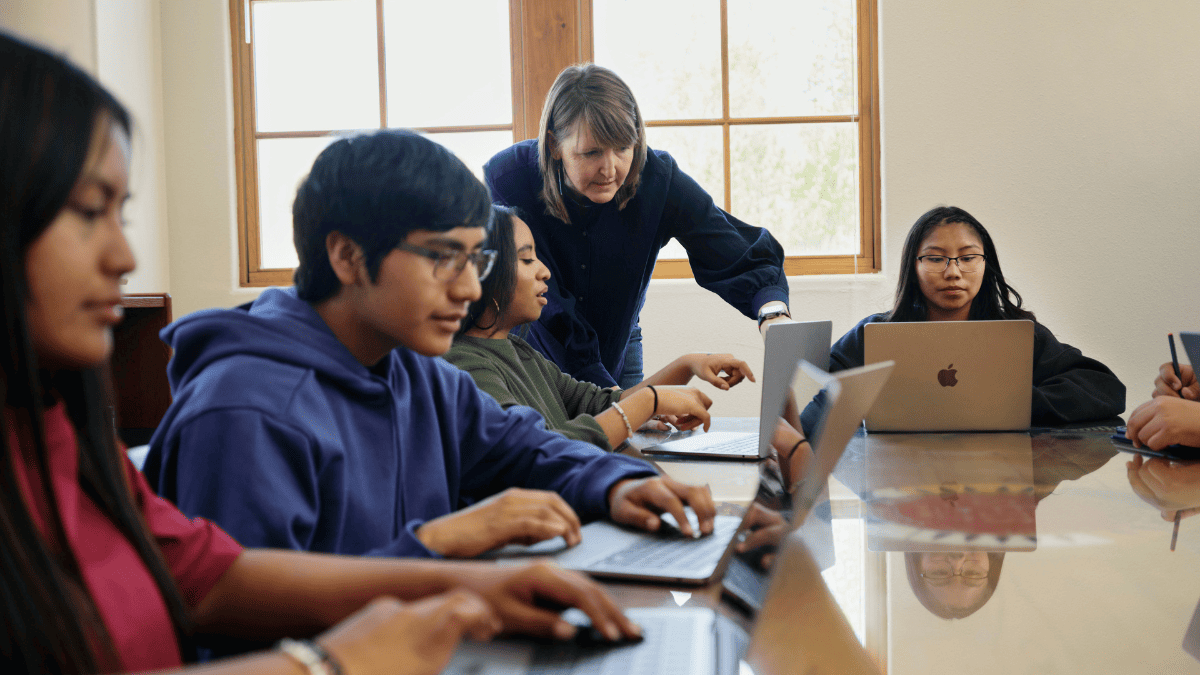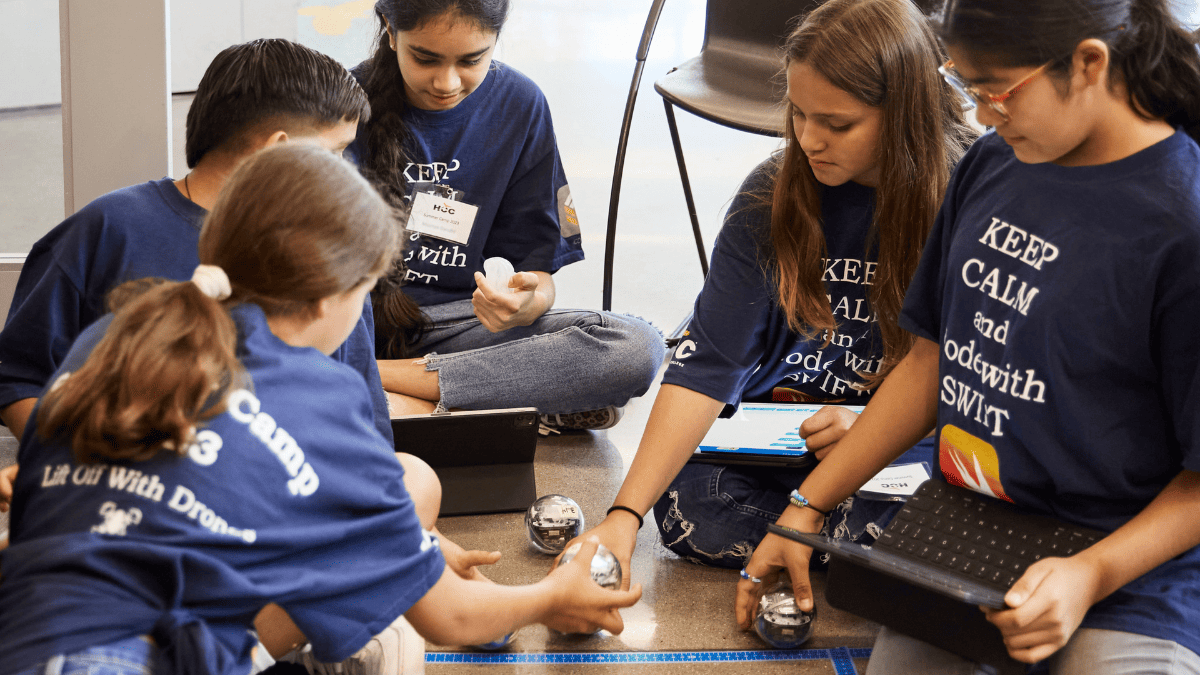Apple has launched new professional learning resources and expanded its global education grant program in celebration of World Teachers’ Day. The company introduced free, creative classroom tools for educators to make learning more engaging, with activities in areas like drawing, video, and music. Additionally, Apple is extending its education grants to 100 new schools and communities worldwide, providing free STEAM programs and technology access to underserved areas. Apple also released its first Education Impact Report, highlighting its efforts to support students and teachers globally over the past 40 years.
Global Education Support with New Resources

New Learning Resources for Teachers
They has introduced free classroom resources designed to help teachers add creativity to their lessons. These resources, called Creative Activities, are easy to use and are tailored for different age groups. For example, there are activities for younger kids (ages 4-8) and older students (ages 8 and up). The goal is to make lessons more engaging without adding extra work for teachers. These activities include:
- Drawing: Students can reveal a constellation by drawing.
- Photo: Create a fun sticker collage.
- Video: Explore the magic of slow-motion video.
- Music: Get creative by laying down a beat.
These resources are now available in the Apple Education Community, an online hub where over 1 million educators can connect, share ideas, and find inspiration. Apple has also expanded the Community’s collaboration features to 16 more countries, making it easier for teachers worldwide to engage.
Expanding Education Grant Program
In a big move, announced it is expanding its education grant program to reach 100 new schools and communities across six continents. This program provides free STEAM (Science, Technology, Engineering, Arts, and Math) programming to underprivileged areas, giving students access to technology and learning opportunities they might not have had before. The aim is to empower both students and teachers with the tools they need for success.
Apple’s First Education Impact Report
For the first time, Apple released an Education Impact Report, which highlights the company’s efforts in education over the past 40 years. Apple’s technology and learning tools have helped millions of students and teachers around the world. The report showcases the broad impact Apple’s work has had on education, from classrooms to communities.
Apple’s Commitment to Education
Apple has long believed that education is key to creating a better world. Lisa Jackson, Apple’s Vice President of Environment, Policy, and Social Initiatives, emphasized that education opens doors and helps create a more equitable future. Susan Prescott, Apple’s Vice President of Education and Enterprise Marketing, added that Apple’s products, like the Mac and iPad, are empowering students to pursue their passions and learn in creative ways.
Apple Education Community and Learning Coach Program

Also been growing its Apple Education Community, an online space for teachers to collaborate and share ideas. Alongside this, Apple’s Learning Coach program continues to expand. This free program teaches educators how to make the most out of Apple products in the classroom. Now available in 15 countries and 8 languages, the program has certified over 4,000 coaches who have, in turn, helped nearly 100,000 teachers, impacting the learning experience of 2.4 million students globally.
Supporting Under-resourced Communities
Through the Community Education Initiative, Apple partners with schools and non-profits to support underprivileged communities with technology, resources, and training. The company has provided hundreds of millions of dollars in grants and support to more than 200 schools and organizations. In the last five years, Apple’s programs have reached over 500,000 students in nearly 2,000 schools worldwide.
For example, in Germany, Apple is working with CodeDoor, a non-profit that helps migrants learn coding skills and prepares them for the workforce. Through Apple’s support, CodeDoor runs a program that teaches participants how to design apps and solve real-world problems using Apple’s coding resources.
Global Partnerships with Organizations
Continuing to deepen its collaborations with community organizations around the world. One such partnership is with the New York Public Library, where Apple helps provide technology training to learners of all ages. These programs focus on teaching adults how to become more confident with computers and other digital tools in today’s fast-evolving world.
World Teachers’ Day Celebrations
In celebration of World Teachers’ Day, Apple is honoring educators through its services:
- On the App Store, Apple has created a collection of essential apps to help teachers with lesson planning and classroom management.
- On Apple Music, users can explore playlists and albums that promote learning, while Apple Books features a selection of books about inspiring educators.
- Apple Podcasts offers special episodes focusing on education, featuring conversations between teachers and experts.
- Apple TV is showcasing movies and shows that celebrate the importance of teachers in students’ lives.
Special Workshop for Teachers
On October 5, hosting a special event for teachers at Apple Park in Cupertino, California. The event, called Go Further with iPadOS 18 for Education, will bring together educators from across California to explore how the iPad Pro and Apple Pencil Pro can enhance classroom learning.
FAQs from the world
Here are some frequently asked questions (FAQs) that the world might want answers to, covering a range of common global topics:
1. What is climate change, and why is it important?
- Answer: Climate change refers to long-term shifts in temperatures and weather patterns, primarily caused by human activities like burning fossil fuels. It is important because it leads to severe impacts on the environment, such as rising sea levels, more frequent natural disasters, and threats to biodiversity.
2. What are renewable energy sources?
- Answer: Renewable energy comes from natural sources that replenish themselves, such as solar, wind, hydro, and geothermal energy. These are critical for reducing greenhouse gas emissions and combating climate change.
3. What is artificial intelligence (AI), and how is it used today?
- Answer: Artificial intelligence is the simulation of human intelligence in machines that can learn, reason, and perform tasks autonomously. AI is used in various fields, including healthcare (for diagnostics), transportation (self-driving cars), and digital services (virtual assistants like Siri and Alexa).
4. Why is cybersecurity important?
- Answer: Cybersecurity is crucial for protecting sensitive data, privacy, and financial systems from digital threats such as hacking, phishing, and ransomware. As more of our lives move online, ensuring secure digital environments is vital for personal and organizational safety.
5. What is the purpose of the United Nations (UN)?
- Answer: The United Nations is an international organization established to promote peace, security, human rights, and development worldwide. It works through various agencies to address global challenges such as poverty, conflict resolution, and climate change.
6. What is the significance of space exploration?
- Answer: Space exploration helps advance scientific knowledge, develop new technologies, and foster international cooperation. It also raises important questions about the future of humanity, such as space colonization and discovering life beyond Earth.
7. What are the Sustainable Development Goals (SDGs)?
- Answer: The SDGs are a set of 17 global goals established by the United Nations to end poverty, protect the planet, and ensure prosperity for all by 2030. They include targets like improving education, achieving gender equality, and combating climate change.
8. What is cryptocurrency, and how does it work?
- Answer: Cryptocurrency is a digital or virtual currency that uses cryptography for security. It operates on decentralized networks using blockchain technology, enabling secure and transparent transactions without the need for intermediaries like banks.
9. Why is biodiversity important for the environment?
- Answer: Biodiversity, the variety of life on Earth, is essential for ecosystem stability. It helps maintain natural processes like pollination, water purification, and climate regulation. A loss of biodiversity can lead to imbalances, making ecosystems more vulnerable to collapse.
10. What are the benefits of space tourism?
- Answer: Space tourism offers opportunities for commercial companies to advance space technologies, boost economic growth, and inspire scientific curiosity. However, there are also concerns about its environmental impact and high costs.
Finalize
Continues to show its commitment to education by providing innovative resources and expanding its education grant programs to underserved communities worldwide. From new tools that help teachers create fun, interactive lessons to global partnerships that provide coding and workforce training, Apple’s initiatives are designed to support the next generation of learners and teachers.


